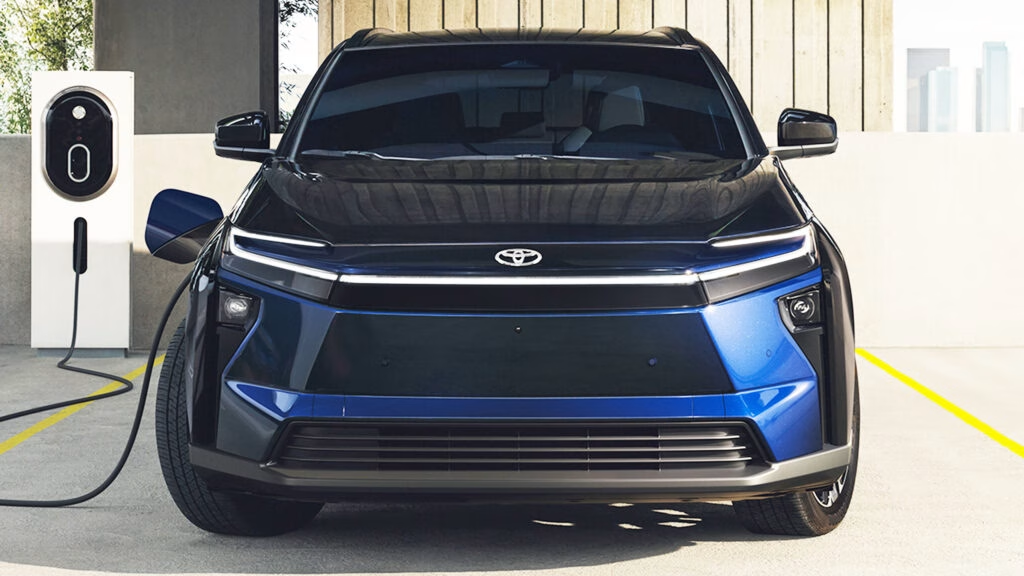How does the 2026 Toyota bZ stack up for value-conscious EV buyers?
Toyota’s 2026 bZ electric SUV is making waves for all the right reasons—starting with its price tag. At $34,900 before destination fees, the entry-level bZ XLE FWD is actually $2,170 cheaper than last year’s bZ4X. That’s a rare move in a market where most EVs seem to inch upward in price with every update. For shoppers who’ve been waiting for a more affordable way into a reputable electric crossover, this is a breath of fresh air.
But Toyota didn’t just stop at price. The base model gets a facelift, ditching the old black fender trim for a sleeker, body-colored look. Under the hood, you’ll find a 57.7 kWh battery paired with a front-mounted electric motor that delivers a healthy 221 horsepower. That’s plenty for daily commutes and weekend getaways, especially when you factor in Toyota’s reputation for reliability.
What are the key upgrades and new tech features in the 2026 bZ?
Beyond the wallet-friendly entry price, the 2026 bZ brings a suite of upgrades that make it feel genuinely modern. The most headline-grabbing change? Toyota’s adoption of the North American Charging Standard (NACS) plug. Translation: you’ll have access to Tesla’s Supercharger network, which is a game-changer for road trips and charging convenience. According to a 2023 J.D. Power study, charging infrastructure remains a top concern for EV buyers, so this move should put a lot of minds at ease.
Inside, the bZ now boasts a massive 14-inch infotainment display—standard across all trims. It’s joined by dual wireless phone chargers and customizable ambient lighting, making the cabin feel upscale without the luxury price tag. Toyota also added paddle shifters behind the steering wheel, letting drivers adjust regenerative braking on the fly. It’s a small touch, but it gives you more control over your driving experience and can even help eke out a few extra miles of range.
How do the different trims compare, and which one makes the most sense?
If you’re eyeing more range or features, Toyota has you covered. The bZ XLE FWD Plus steps things up with a larger 74.7 kWh battery, starting at $37,900. That means longer drives between charges—ideal for folks with a longer commute or a taste for weekend road trips. Prefer all-wheel drive? The bZ XLE AWD combines that bigger battery with a second motor for $39,900.
At the top end, the Limited trims add more luxury and tech, but with a price bump: $43,300 for FWD and $45,300 for AWD. These models see a $1,500 increase over last year, but they’re packed with the latest features and a more refined interior. For many, the sweet spot will be the XLE FWD Plus or AWD—balancing range, features, and price.
Here’s a quick look at how the pricing shakes out:
Model 2026 bZ 2025 bZ4X Difference
bZ XLE FWD $34,900 $37,070 -$2,170
bZ XLE FWD Plus $37,900 N/A –
bZ XLE AWD $39,900 $39,150 +$750
bZ Limited FWD $43,300 $41,800 +$1,500
bZ Limited AWD $45,300 $43,880 +$1,420
Will the 2026 bZ finally win over American EV shoppers?
Toyota’s bZ lineup hasn’t exactly been a runaway hit in the U.S.—yet. But with this price drop, improved tech, and access to Tesla’s charging network, the 2026 bZ is positioned to make a stronger case. The EV market is more competitive than ever, with rivals like Hyundai, Kia, and Ford all vying for attention. Still, Toyota’s reputation for durability and the company’s vast dealer network give it a unique edge.
One thing to watch: while the base price is lower, upper trims are a bit pricier than before. That’s not unusual in the industry, but it does mean buyers will want to weigh the value of added features versus their actual needs. And, as always, keep an eye on available incentives—federal and state EV credits can make a big difference in your out-of-pocket cost.
What’s the real-world impact of these changes for drivers?
Let’s be honest: most people shopping for an EV want three things—affordability, range, and hassle-free charging. The 2026 Toyota bZ delivers on all three fronts. The lower starting price makes it accessible to more buyers. The bigger battery options mean you won’t be sweating your range on longer drives. And the NACS plug opens up the best charging network in North America.
Add in thoughtful touches like a larger infotainment screen, wireless charging, and customizable lighting, and you’ve got a package that feels both practical and a little bit special. It’s not just about specs—it’s about making daily life easier and more enjoyable.
The big takeaway? Choosing the right EV isn’t about perfection—it’s about smarter adjustments. Start with one change this week, and you’ll likely spot the difference by month’s end.

